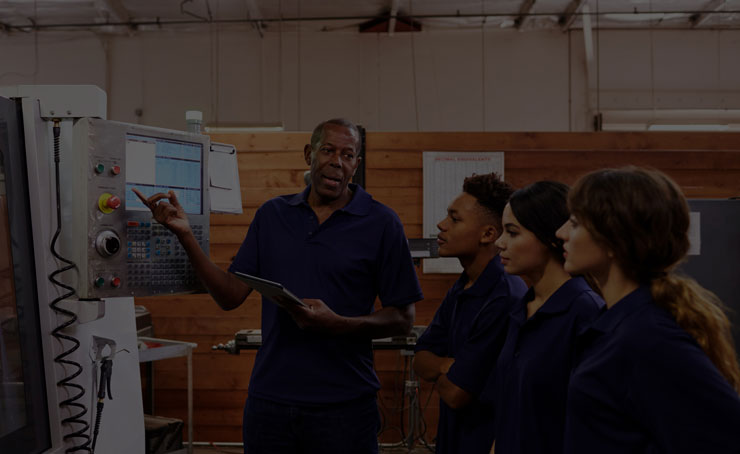Be a Blog Subscriber
Join thousands of manufacturing leaders and professionals who get the Accelerate blog delivered straight to their inbox


It’s been just about a year since COVID-19 arrived, disrupting the world as we knew it. The manufacturing industry, along with all others, scrambled to adapt and persevere.
While the challenges are not over, I deeply admire the fortitude and creativity of the industry. At the same time, I’m not surprised; an adaptable, innovative spirit has been the hallmark of manufacturing from the beginning.
We see that spirit all around us. To support the industry during this past difficult year, SME has been committed to unearthing and sharing best practices and helping manufacturers, educators and others learn what is working so others may adapt to quickly changing environments.
As we begin 2021, let’s acknowledge that the pandemic has been an accelerator of technology both in the manufacturing process and the learning process.
Perhaps we can even say that the virus forced innovation that was inevitable, yet slow.
On the manufacturing process side, companies are realizing now is the time to start — or accelerate their move to smart manufacturing. The pandemic has prompted movement toward automation and robotics for both health and safety reasons as well as to retain productivity despite, in some cases, fewer workers onsite.
To limit person-to-person contact to reduce the spread of the disease, some smart factories were able to monitor equipment remotely and even complete maintenance from afar. Digital tools such as augmented and virtual reality allowed experts to weigh in on problems without traveling.
Technology is transforming jobs — and companies must stay ahead of this when it comes to people development.
The integration of new technologies greatly impacts the recruiting and training of employees. New approaches are here to stay, even when vaccinations allow companies to return to “normal.”
For instance, the recruiting process will rely more on technology for interviews. Video calls have already become more prevalent in initial phone screening — and during this past year, the new in-person interview as well.
Our education partners have certainly seen the impact of elearning. With social distancing, most schools had to convert to a totally online educational model. Fortunately, many already had some online component up-and-running and focused quickly on expanding and streamlining their offerings.
Despite the challenges of a rapid pivot to remote learning, we hear positive feedback about how the experience has opened new possibilities and ways of looking at learning. Instructors have discovered elearning as a way to scale faster and use time better.
While we don’t suggest that online learning will replace in-person instruction, blended — or hybrid — training programs, are here to stay.
Instructors are reevaluating what can be taught in the classroom. Programs will continue to offer hands-on learning for machining and welding. But moving forward, more educators will consider what homework — say, theory reinforcement — can be done online. A flipped classroom model is becoming a necessary reality for teachers to adapt curriculum for a virtual, flexible presence.
Students are adapting too. Watch how many of them easily use their phones for elearning. They appreciate the flexibility of accessing the material wherever they are, whenever they have free time.
Whether for adult learners, dual enrollment programs or other types of instruction, a mix of online and in person courses are delivering results for educators and students – and ultimately, for employers.
New technology on the factory floor offers opportunities for both new and incumbent workers to learn and grow in their careers.
Investing in new technology for learning is essential too.
One exciting development to look for this year: At Tooling U-SME, we are piloting new virtual reality (VR) labs to deliver training. VR is an efficient way to safely build skills and allow for repeated practice after students or employees complete their knowledge-based curriculum whether delivered in person or online and before training on real equipment.
This will be an immersive experience, using a VR headset (although it will also work as 2D instruction as well if headsets are not available).
We think this “gaming” aspect will especially appeal to younger generations and help generate excitement about a career in manufacturing.
In addition, for training in various aspects of Industry 4.0, including additive manufacturing, cybersecurity, data collection, and machine learning, we offer dozens of these online classes and will be introducing more in the new year.
As we head further into 2021, let’s recognize that the pandemic has impacted the manufacturing industry in many ways including being an accelerator of technology.
The adoption of new technologies in both the manufacturing process and learning process is transforming the industry. These are changes that will remain in place long after the pandemic has passed.
We will continue to share best practices from both manufacturers and educators so we can all learn and move forward together in this brand-new year.
Join thousands of manufacturing leaders and professionals who get the Accelerate blog delivered straight to their inbox